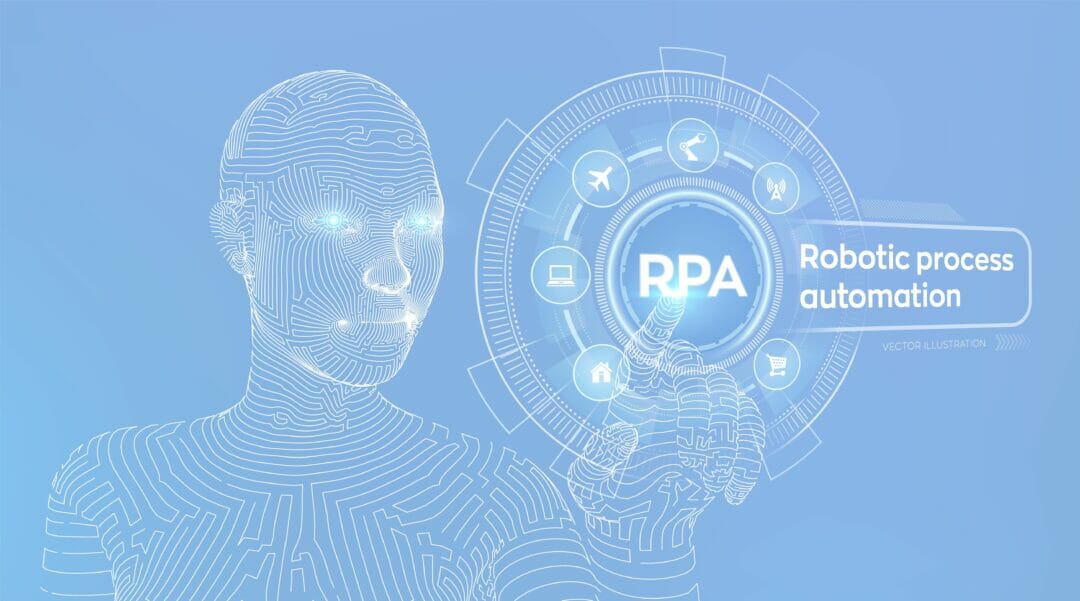Robotic process automation, or RPA, often conjures up images of robots assembling cars, or even droids sitting next to Bob in Accounts Payable. But in reality, RPA is simply software that automates repetitive, typically manual, processes and performs them accurately, efficiently and cost-effectively – making it highly sought after in the business world.
Given that the RPA market is expected to reach $7.1 billion by 2025, it’s clear that this technology is fast becoming an essential tool for enterprises to maintain pace with peers. RPA is particularly beneficial to businesses that process large amounts of structured data, which is specific data stored in a predefined format, such as within a particular cell in a spreadsheet, a field in a database, or an entry in an online form.
RPA in business
During the pandemic, RPA has taken centre stage, as businesses looked for ways to provide goods and services with reduced human contact. Many of these businesses are using RPA now to automate supply chain processes like data entry, billing systems and after-sales service support. Not only does RPA offer great cost and efficiency savings, but it also frees up employee time to focus on more creative tasks.
From its origins as a software tool programmed to work solely with structured data and to automate repeatable business processes, RPA and its definition have evolved. Deloitte recently described RPA as something that “combines artificial intelligence — including natural language processing, machine learning, autonomics, and machine vision — with automation.”
How companies can overcome the content processing drawbacks of RPA
RPA meets AI
While some would quibble with that definition, there’s no question that RPA and AI together are a powerful tool. Using aspects of AI like computer vision, which can “read” digital images and extract data from documents, and natural language processing and semantic analysis, which are employed to understand and interpret text in context, process automation is taking a huge step forward. This combination allows systems to understand structured and unstructured data, and learn from billions of transactions, data points, and user feedback.
With expense and invoice processing, for example, intelligent automation can not only extract predictable, structured data from templated forms, it can read text from receipts, even if barely legible, and apply semantic understanding to invoices. Powered by AI, finance tools can make independent decisions by understanding what is being bought, who is buying it, and how it should be classified and accounted for.
AI systems use ingested data to learn and to develop a wider understanding of business scenarios, further enhancing their decision-making and predictive capabilities. The more information consumed, the more intelligent they grow. Whilst RPA can require human intervention if the system does not recognise certain types of data, AI can process the situation using context, delivering an intelligent and informed decision. RPA is typically limited to rule-based tasks, whereas AI is equipped with tools to understand exceptions to the rules.
What’s next for RPA and AI?
When it comes to business automation, both RPA and AI add value, but there are specific scenarios where each technology makes more sense. For instance, many expense management systems leverage RPA to extract predictable, structured data from templated, employee-filled expense forms. This automation eliminates further human involvement by validating and subsequently approving or rejecting reports.
However, for companies with a great deal of unstructured data, if the system can’t process the data and needs to be instructed on how to classify and process it, human intervention is still necessary. In such cases, AI-powered solutions may be preferable, as such tools can easily read unstructured data, like handwritten receipts from black cabs or contract terms from contracts.
Despite the proven benefits of RPA and AI, accounting and finance operations still lag when it comes to automation. Only 12% of surveyed companies utilise RPA tools, while roughly 11% are leveraging AI. As a result, businesses have a massive opportunity to enhance performance, productivity and efficiency through automation – something that makes business sense for every organisation.








